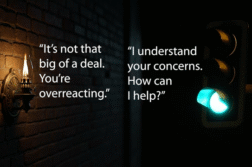UORLANDO, Fla (Ivanhoe Newswire) — As the world celebrates earth day April 22nd, a sobering reality is that our food and water sources are becoming increasingly contaminated with microplastics and toxic metals. But what can you do about it? Is there a way to keep you and your family safe from toxins.
The EPA reveals 70 million people have drinking water that tested positive for toxic forever chemicals.
The average bottle of water contains 240 thousand pieces of cancer-causing nano plastics.
And now scientists find 90 percent of all burgers, steaks, chicken and even the so-called healthier plant-based foods contain microplastics.
David Winter, MD, Baylor Scott & White Health says, “You also get it from seafood like fish, oysters, shrimp.”
Americans consume more than 11 thousand microplastics each year from our food. CNN reported that’s an average of five grams of plastic every week—the equivalent of a credit card.
The largest source of plastic ingestion is drinking water. Researchers at Columbia university found the average liter of bottled water contains over 240 thousand nano plastics.
So what can you do about it? First, use nontoxic reusable stainless steel water bottles. Avoid foods that are stored or wrapped in plastics, avoid fast food, as studies show it contains high levels of phthalates. Also, researchers found high fat foods contain more microplastics. Choose fresh, minimally processed foods. Use wood or stainless-steel kitchen tools. Avoid plastic shopping bags.
Which is safer, bottled or tap water? Both contain toxins, but the researchers who did the study out of Columbia say after what they learned, they all decided to drink less bottled water. Either way, a simple and inexpensive way to ingest less microplastics—a new study out of China found that boiling water for five minutes then filtering it through a coffee filter removes 90 percent of plastics. And more particles were able to be removed from hard water than from soft. toxins
Contributors to this news report include: Marsha Lewis, Producer; Bob Walko, Editor
Sources:
https://www.sciencedirect.com/science/article/pii/S0269749123022352?via%3Dihub
https://www.cnn.com/2019/06/11/health/microplastics-ingestion-wwf-study-scn-intl/index.html
https://www.nrdc.org/stories/4-ways-avoid-toxic-chemicals-food-packaging



